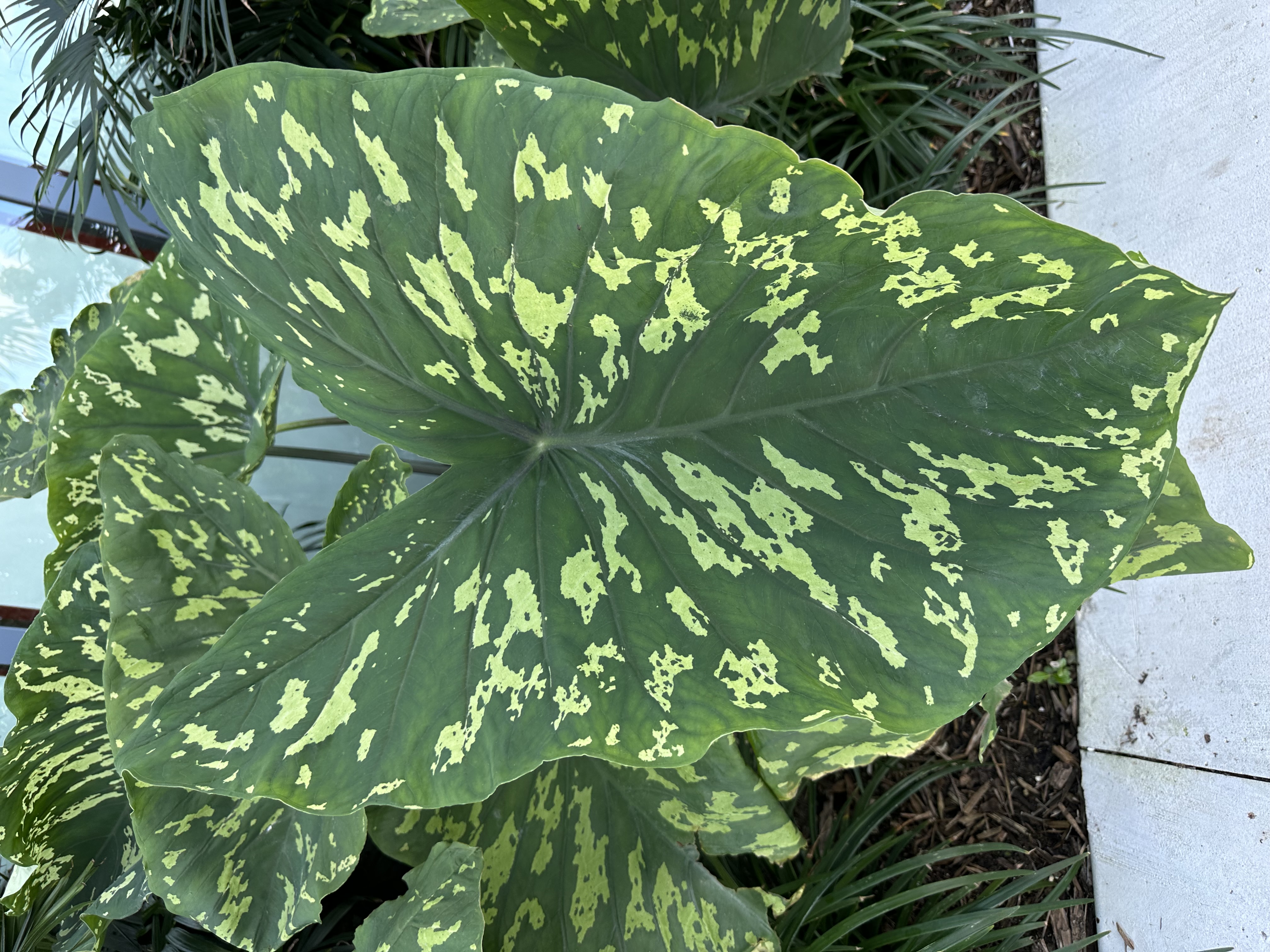

November is a very important month for these charming islands, and the Caribbean region in general. The end of the month marks the official end to the hurricane season, and few summers have presented the levels of unease and uncertainty that we saw this year. Climate change has long been predicted, and is now a household term, like hurricane season, and we are now watching the effects unfold before our very eyes.
While walking Camana Bay to choose a plant that evoked a sense of thanks — or a changing of the seasons — nothing felt more appropriate than the Hilo Beauty Elephant Ear. The wildfires in Lahaina, Hawaii, on the island of Maui were perhaps the most significant and alarming climate change-related event this year. A chaotic string of weather-related events caused a tragedy in a very tight knit community, like Cayman, and serves as a good reminder that climate change comes in many forms. Although Hilo is not on the island of Maui — but rather on Big Island — it is the same archipelago. As is true for many island nations, what happens on one island is felt by all.
Hilo Beauty Elephant Ear, or Caladium praetermissum 'Hilo Beauty', has no known origin. It remains a mystery. And because of that mystery, it ended up with the specific epithet praetermissum, which in Latin means overlooked or omitted. Previously, the plant was classified as both an Alocasia and a Colocasia, thence the reference to the Elephant Ear (there are other genera that are referred to as Elephant Ears; Alocasia and Colocasia are the most common). While there are similarities in genera, it was not until the mystery specimen with unknown origin — housed at the Munich Botanic Gardens in Munich, Germany — was studied further that it was it revealed that the plant was a Caladium.
To deepen the mystery of C. praetermissum 'Hilo Beauty,' its natural distribution is also unknown. Though it can be found around Hilo, Hawaii, these specimens tend to have smaller leaves with textures that more closely resemble an Alocasia, likely due to growing conditions. Albeit unconfirmed to my knowledge, the closest suspected native region is somewhere in Ecuador or Bolivia, South America. This hypothesis was likely reached due to most Caladium being native to this region as well.
An absolutely stunning ornamental, with camouflage variegation on the leaves, purple tinted veins and purple to black stems, it was likely derived from one clone vegetatively. This is quite amazing considering it is now extensively cultivated for use in sub-tropical and tropical regions. It was noted that in a 40-year span while housed in The Munich Botanic Gardens, it flowered only twice. Like Alocasia and Colocasia, Caladium are Arums, and belong to family Araceae. In previous Focus on Flora articles, I have shared that Arums have unique flowering structures called a spadix, which is most often found inside of what looks like a little hood, called a spathe. This is a helpful bit of information which can be used to identify other Arums as well.
In Camana Bay, Hilo Beauty Elephant Ear can be found on the North side of Kapok Residences.
This article was originally featured in the November 2023 print edition of Camana Bay Times.